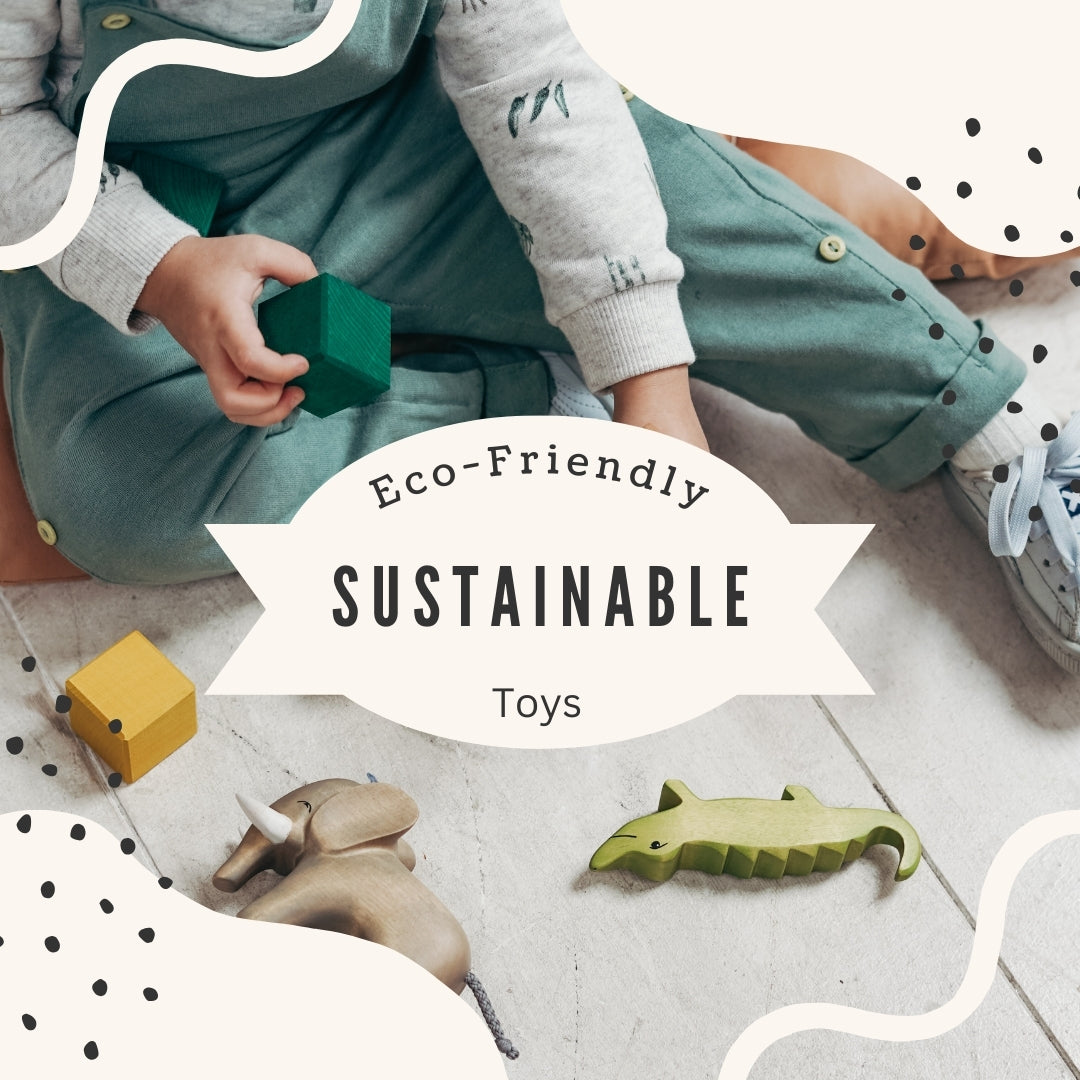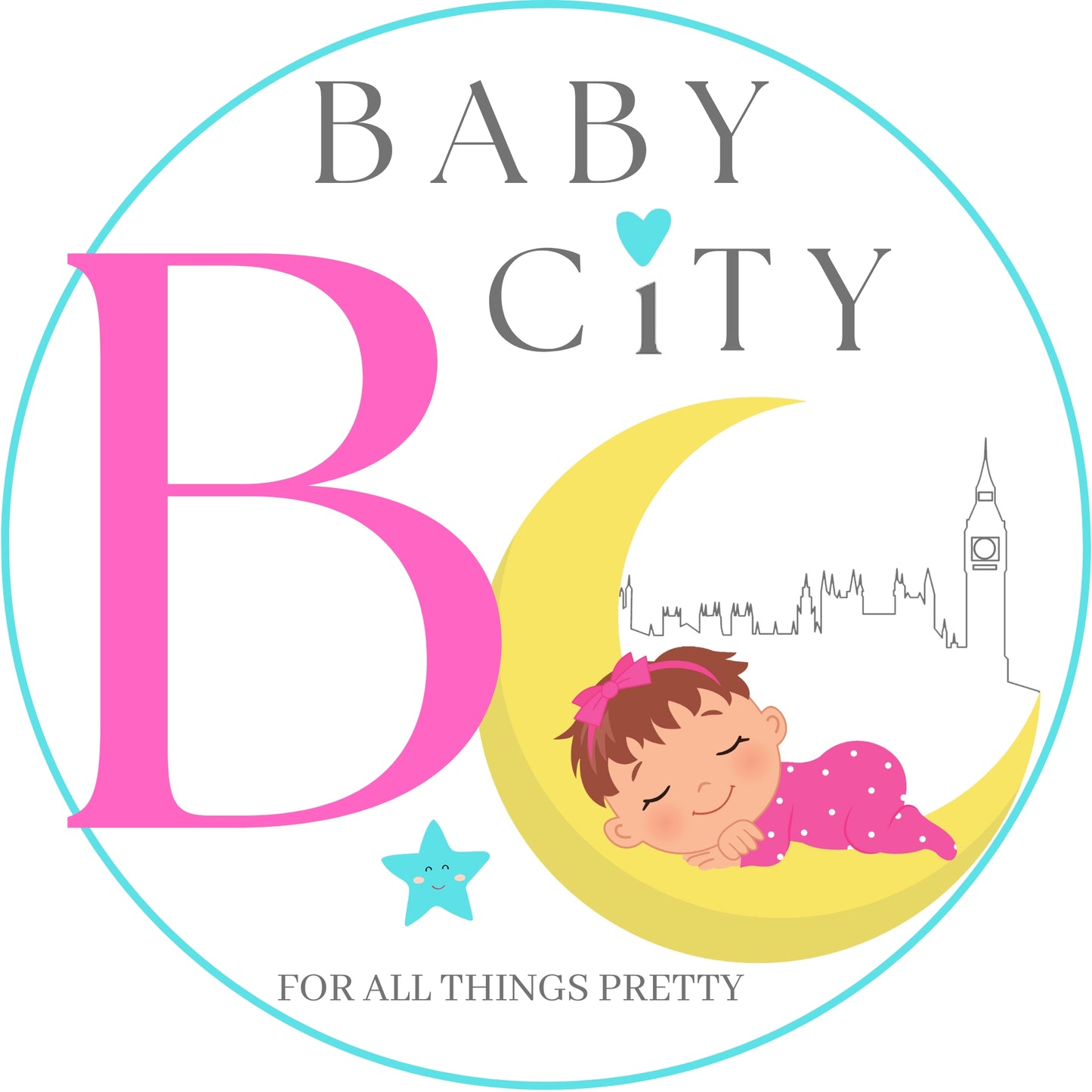
As parents, we want to provide the best for our children, and that includes their toys and clothes. However, with the increasing concern for the environment, it's important to consider the impact that these products have on the planet. The good news is that there are plenty of eco-friendly options available that are not only better for the environment but also safer for our kids. This post will explore sustainable playtime by showcasing some of the best eco-friendly toys for kids. Let's dive in and discover how you can reduce your family's carbon footprint while keeping your kids happy and healthy.
1. The importance of sustainable playtime
In today's world, where environmental concerns are at the forefront of our minds, it's crucial to instill eco-conscious values in our children from a young age. Playtime is an integral part of a child's development, and what better way to promote sustainability than through eco-friendly toys and fashion choices?
The importance of sustainable playtime goes beyond just reducing our carbon footprint. By incorporating eco-friendly toys and fashion into our children's lives, we are teaching them about the importance of mindful consumption, recycling, and caring for the planet. These toys are typically made from sustainable materials such as wood, organic cotton, or recycled plastics, ensuring that they are safe for both the child and the environment.
When children engage in sustainable playtime, they learn to appreciate the value of resources and understand the impact of their choices. They develop a sense of responsibility towards the Earth and grow up to be environmentally conscious individuals. Moreover, sustainable toys often encourage creativity, imagination, and problem-solving skills, fostering holistic development in children.
Additionally, sustainable fashion for kids not only reduces waste but also supports ethical manufacturing practices. By opting for organic and ethically produced clothing, we are ensuring that no harmful chemicals or unfair labor practices are involved in the making of the garments. It's a way of showing our children that fashion can be both stylish and sustainable.
By embracing sustainable playtime, we are not only providing our children with a healthier and safer play environment but also shaping the future generation to be stewards of the Earth. So, let's make a conscious choice to support eco-friendly toys and fashion for our kids, ensuring a sustainable and brighter future for them and the planet.
2. Understanding the impact of traditional toys and fashion on the environment
Traditional toys and fashion for kids may seem harmless, but their impact on the environment is significant. Many of these products are made from materials that require extensive resources and energy to produce, contributing to deforestation, pollution, and greenhouse gas emissions.
Take plastic toys, for instance. They are often made from non-biodegradable materials, which means they will remain in landfills for hundreds of years, releasing harmful chemicals into the soil and water. Additionally, the production of plastic toys requires the extraction of fossil fuels, contributing to climate change.
Similarly, traditional fashion for kids often relies on cheap and fast production methods, using synthetic materials that are derived from non-renewable resources. The production of these materials emits toxic chemicals and pollutants into the air and water, while the excessive use of water and energy adds to the environmental burden.
Moreover, the fast fashion industry promotes a culture of disposability, where clothes are quickly discarded after a few uses, leading to immense textile waste. These discarded clothes often end up in landfills, where they decompose and release harmful gases like methane.
Understanding the impact of traditional toys and fashion on the environment is crucial for making more sustainable choices for our children. By opting for eco-friendly alternatives, such as toys made from recycled materials or organic cotton clothing, we can minimize our ecological footprint and ensure a healthier planet for future generations.
Fortunately, there is a growing movement towards sustainable playtime, with many companies now offering eco-friendly toys and fashion options for kids. These products are designed with the environment in mind, using responsibly sourced materials, natural dyes, and ethical manufacturing practices.
By supporting these sustainable brands, we can not only provide our children with safe and non-toxic playtime experiences but also contribute to the preservation of our planet. Together, we can create a more sustainable future for our little ones, where playtime and fashion can coexist harmoniously with environmental consciousness.
3. Eco-friendly materials for toys and fashion
When it comes to choosing toys and fashion for our little ones, it is essential to prioritize sustainability and eco-friendliness. By opting for products made from eco-friendly materials, we can contribute to a healthier planet and provide a better future for our children.
One popular choice for eco-friendly toys is wood. Wooden toys are not only durable and timeless but also sustainable. Unlike plastic toys that can end up in landfills, wooden toys are biodegradable and can be passed down through generations. They are often made from sustainably sourced wood, ensuring that trees are replanted to maintain a healthy ecosystem. A great brand for baby and children's wooden toys is Janod, made from responsibily sourced wood and uses non toxic water based paints.
Another eco-friendly material to consider is organic cotton. Traditional cotton production involves the use of harmful pesticides and chemicals, which not only harm the environment but can also be harmful to children's sensitive skin. Organic cotton, on the other hand, is grown without the use of these chemicals, making it a safer and more sustainable choice for kids' clothing.
Recycled materials are also gaining popularity in the world of eco-friendly toys and fashion. Companies are finding innovative ways to transform materials like plastic bottles into soft and safe toys - such as use for stuffing in plush toys adopted in the Keeleco range by Keel Toys. By giving these materials a new life, we can reduce waste and promote a circular economy.
In addition to the materials used, it is also important to consider the production practices of the brands we support. Look for companies that prioritize fair trade practices, ethical manufacturing, and transparent supply chains. These values ensure that the products we choose are not only eco-friendly but also socially responsible.
By opting for toys and fashion made from eco-friendly materials, we can teach our children the importance of sustainability and foster a love for the environment from an early age. Together, we can create a world where playtime is not only fun but also sustainable.
4. Sustainable toy options: wooden toys, recycled plastic toys, and more
When it comes to playtime, it's important to consider the environmental impact of the toys we choose for our kids. Thankfully, there are now plenty of sustainable toy options available that not only provide endless fun but also contribute to a greener future.
Wooden toys have long been a popular choice for eco-conscious parents. They are made from natural and renewable materials, such as sustainably sourced wood, and are often crafted with non-toxic paints and finishes. These toys not only have a timeless appeal but also offer durability, ensuring they can withstand the test of time and be passed down through generations.
Recycled plastic toys are another great option for sustainable playtime. Made from post-consumer recycled materials, these toys help reduce the demand for new plastic production while diverting waste from landfills. Many companies have embraced this concept and now offer a wide range of toys, including building blocks, puzzles, and even outdoor play equipment, all made from recycled plastic.
In addition to wooden and recycled plastic toys, there are other innovative eco-friendly options available as well. Some companies are now producing toys made from plant-based materials, such as bioplastics derived from corn or sugarcane. These toys and in the case of MAM soothers, offer the same functionality and enjoyment as traditional items but with a significantly lower carbon footprint.
When choosing sustainable toys, it's also important to consider the manufacturing processes and ethical standards of the companies behind them. Look for certifications such as Fair Trade or Forest Stewardship Council (FSC) to ensure that the toys are produced responsibly and with fair labor practices.
By opting for sustainable toy options like wooden toys, recycled plastic toys, and toys made from plant-based materials, we can teach our children the importance of environmental stewardship from an early age. Not only will they have a blast playing with these eco-friendly toys, but they will also learn valuable lessons about sustainability and the role they can play in protecting our planet.
5. Supporting ethical and fair-trade brands
Supporting ethical and fair-trade brands is not only a responsible choice, but it also helps promote sustainability in the toy and fashion industry. By choosing to buy from companies that prioritize ethical practices, you are contributing to a better future for both the environment and the people involved in the production process.
Ethical brands prioritize fair wages, safe working conditions, and environmentally friendly manufacturing methods. They often work closely with local artisans and communities, ensuring that their products are made with love and care. By supporting these brands, you are not only providing your children with high-quality toys and clothing but also making a positive impact on the lives of those who create them.
When shopping for toys, look for brands that use sustainable materials like organic cotton, recycled plastic, or responsibly sourced wood. These materials are not only safer for children but also help reduce the carbon footprint of the industry. Additionally, supporting brands that offer gender-neutral options promotes inclusivity and breaks stereotypes.
In the fashion industry, choose brands that prioritize sustainable practices such as using organic or recycled fabrics, reducing water and energy consumption, and implementing fair-trade principles. These brands often have transparent supply chains, allowing you to trace the journey of your child's clothing from production to your doorstep.
By consciously supporting ethical and fair-trade brands, you are teaching your children the importance of responsible consumerism and the value of supporting businesses that prioritize people and the planet. Together, we can create a sustainable future for our children while encouraging creativity, playfulness, and style.
6. DIY and upcycling ideas for sustainable playtime
When it comes to sustainable playtime, DIY and upcycling ideas can be a fun and creative way to engage your kids while reducing waste. Instead of constantly buying new toys or clothes, why not repurpose and breathe new life into items you already have?
One idea is to transform old t-shirts into unique and colorful stuffed animals. Simply cut out the desired shape, sew the edges, and stuff it with old fabric scraps or cotton batting. This not only gives your child a new cuddly friend but also teaches them about the importance of reusing materials.
Another fun DIY project is creating a sensory play kit using recycled materials. Gather items like cardboard boxes, plastic bottles, and empty containers, and let your imagination run wild. These items can be transformed into sensory bottles, sensory bins, or even musical instruments. Encourage your child to explore different textures, colors, and sounds, all while reducing waste and promoting creativity.
Upcycling can also extend to your child's wardrobe. Transforming old jeans into shorts, adding patches or fabric paint to worn-out t-shirts, or repurposing fabric scraps to create headbands or hair accessories are just a few examples. Not only will your child have unique and stylish pieces, but they will also learn about the value of extending the lifespan of clothing.
By embracing these DIY and upcycling ideas, you not only promote sustainable playtime but also foster a sense of creativity and resourcefulness in your child. Plus, it's a great opportunity for quality bonding time and teaching them about the importance of being environmentally conscious. So grab your crafting supplies, get creative, and enjoy a sustainable playtime with your little ones!
7. Teaching kids about sustainability through play
Teaching kids about sustainability is not only important for their future, but also for the health and well-being of our planet. And what better way to do it than through play? By introducing eco-friendly toys and fashion to our children, we can help instill in them a sense of responsibility towards the environment from an early age.
There are numerous options available when it comes to eco-friendly toys. From wooden puzzles and blocks made from sustainably sourced materials to plush toys stuffed with organic cotton, these toys not only provide endless hours of fun but also promote a greener lifestyle. Additionally, there are toys that teach kids about recycling, composting, and renewable energy, allowing them to learn while they play.
Through play, children can understand the importance of reducing waste, conserving resources, and making mindful choices. By introducing them to eco-friendly toys and fashion, we can inspire them to become future stewards of the environment. Encouraging them to reuse, recycle, and appreciate the value of sustainable practices will help shape a generation that cares deeply about the planet.
Incorporating sustainability into playtime not only benefits our children but also contributes to a greener future. By teaching them to cherish and protect the environment through the toys they play with and the clothes they wear, we can empower them to make conscious choices that will have a positive impact on both their lives and the planet.
8. Tips for parents on shopping sustainably for toys and fashion
In today's world, where sustainability is becoming increasingly important, it is crucial for parents to consider the impact of their shopping choices on the environment. When it comes to toys and fashion for kids, there are several tips that can help parents shop sustainably and make a positive impact.
First and foremost, opt for toys and clothing made from eco-friendly materials. Look for products made from organic or recycled materials, as these often have a lower environmental footprint compared to conventional options. For toys, consider wooden or bamboo alternatives instead of plastic, which takes a long time to decompose and can contribute to pollution.
Secondly, choose toys and clothing that are durable and built to last. By investing in high-quality items, parents can reduce the need for constant replacements, thereby minimizing waste. Look for well-made toys that can withstand rough play and clothing that is designed to withstand multiple washes without losing its quality.
Another important tip is to support brands and retailers that prioritize sustainability. Do your research and look for companies that have environmentally-friendly practices, such as using renewable energy, minimizing packaging waste, or implementing fair labor practices. By supporting these brands, you are sending a message that sustainability matters to you as a consumer.
Lastly, encourage creativity and imagination in playtime. Instead of relying solely on toys, engage in activities that promote imaginative play, such as arts and crafts, outdoor exploration, or building with recycled materials. By fostering a love for creativity, you are not only reducing reliance on consumerism but also instilling values of sustainability in your children.
Shopping sustainably for toys and fashion for kids may require a little extra effort, but the long-term benefits for the environment and future generations are worth it. By following these tips, parents can make a positive impact and teach their children the importance of caring for the planet while still enjoying playtime and fashion.
9. Embracing a greener future: the benefits of choosing eco-friendly options for playtime
Embracing a greener future by choosing eco-friendly options for playtime is not only beneficial for the environment but also for the well-being of our children. In a world where sustainability and conscious consumerism are gaining momentum, it is essential to consider the impact our choices have on the planet.
When it comes to toys, opting for eco-friendly options means selecting products that are made from sustainable materials such as organic cotton, recycled plastic, or responsibly sourced wood. These toys are often free from harmful chemicals and toxins, ensuring a safe and healthy play environment for children.
Additionally, eco-friendly toys are often designed to be durable and long-lasting, reducing the need for frequent replacements and minimizing waste.
Choosing eco-friendly fashion for kids goes beyond just dressing them in trendy clothing. It involves selecting garments made from organic or recycled materials, produced through ethical and fair-trade practices. By supporting brands that prioritize sustainability and ethical manufacturing, we can teach our children the importance of conscious consumption and responsible fashion choices.
The benefits of embracing eco-friendly options for playtime are manifold. Firstly, it instills in children a sense of environmental consciousness from a young age, fostering a lifelong appreciation for the planet and its resources. Secondly, it sets an example for others, encouraging friends and family to consider sustainable alternatives as well. Furthermore, by supporting eco-friendly brands, we contribute to the growth of a market that prioritizes sustainability, pushing other companies to follow suit.
In conclusion, choosing eco-friendly toys and fashion for kids is a powerful way to make a positive impact on the planet. By embracing a greener future, we not only provide a safe and healthy play environment for our children but also contribute to the collective effort of creating a more sustainable world for generations to come. So, let's make conscious choices and inspire a generation that understands the importance of living harmoniously with nature.
We hope you found this blog post on sustainable playtime helpful and inspiring. As parents, it's important to not only nurture our children's creativity and imagination but also where possible teach them about the importance of sustainability and caring for the environment. By opting for eco-friendly toys and fashion choices, we can make a positive impact on the planet and set a good example for our little ones. Remember, small changes can make a big difference, and together we can create a more sustainable future for our children. So let's embrace sustainable playtime and watch our kids thrive in a world that we've helped preserve.

